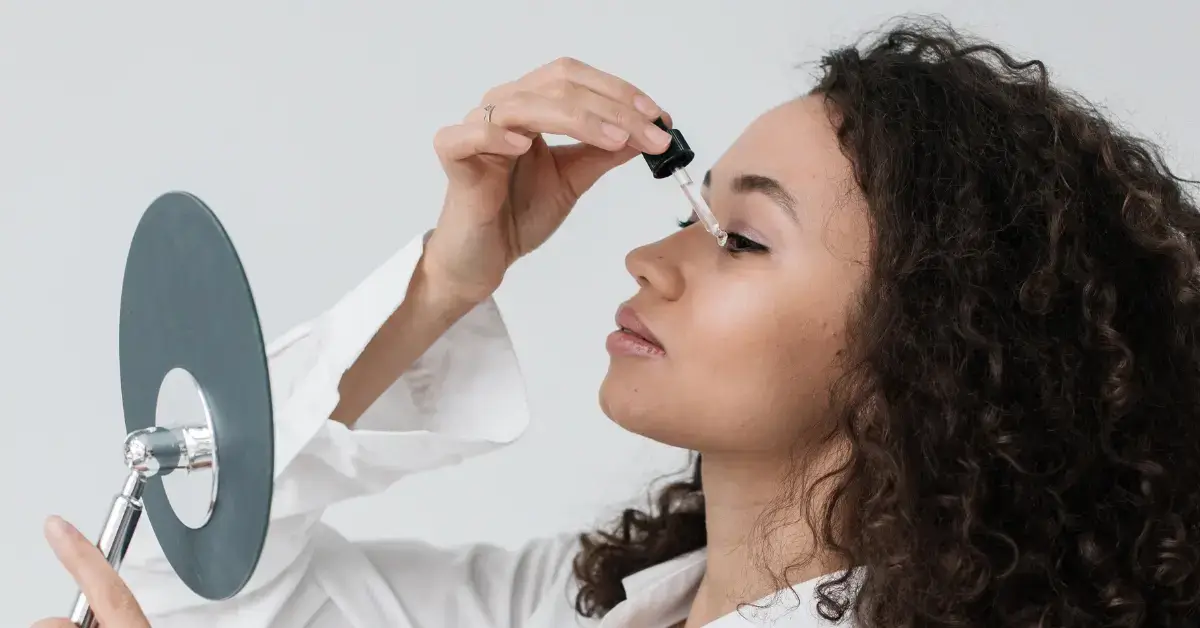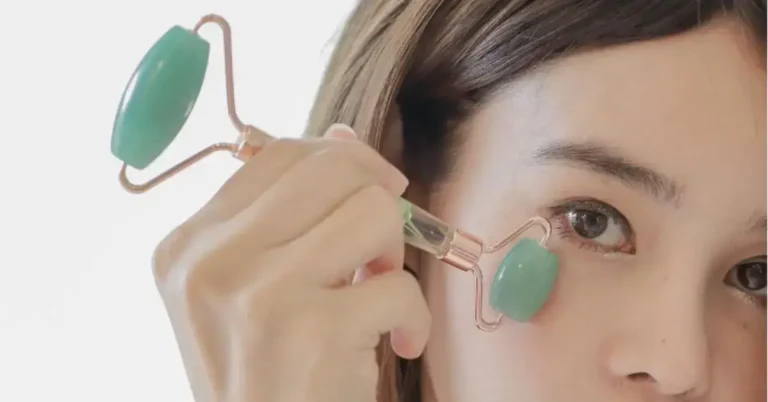Tired of skincare routines that fail to provide the results you desire? Worry no more, as gua sha offers the secret to accessing your skin’s ultimate potential.
Imagine a technique deeply rooted in traditional Chinese medicine, one that delicately harnesses the wisdom of centuries to bestow upon you the flawless, vibrant complexion you’ve yearned for. Gua sha, the art of using a smooth massage tool to gracefully caress your skin, promises to be the game-changer you’ve been seeking.
As you dive into the enchanting world of gua sha, a crucial secret awaits: the magic of the right facial oil. It’s the pivotal detail that can elevate your gua sha experience from ordinary to extraordinary.
Table of Contents
What Oil to Use with Gua Sha
You see, gua sha isn’t just a massage; it’s an intricate dance between the ancient wisdom of Chinese medicine and the modern desires for radiant, healthy skin. It’s about enhancing circulation, taming inflammation, and guiding your lymphatic system to reveal a rejuvenated you. But, there’s a catch – without the perfect oil, you’re missing out on the full potential of this transformative ritual.
Here’s where your journey takes a thrilling turn – selecting the ideal oil for your gua sha voyage is not just a choice; it’s your personal key to unlocking flawless skin. Are you grappling with morning puffiness? Yearning for an even skin tone?
The right oil is your ally, tailored to your unique skin type, and armed to tackle your specific concerns. Imagine your mornings becoming a ritual of serenity and your evenings a celebration of self-care, all thanks to the artful pairing of gua sha and the perfect oil.
Understanding Gua Sha
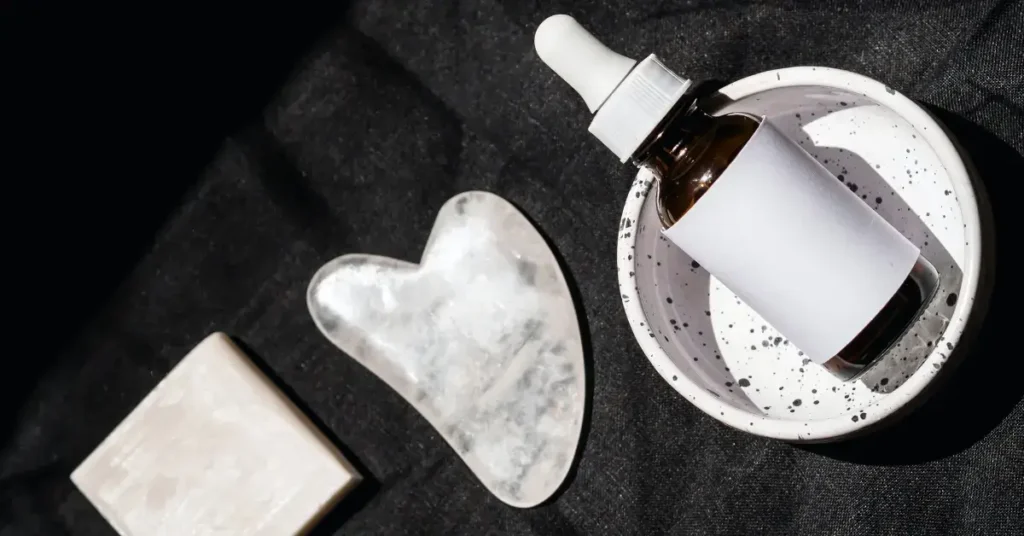
Gua Sha is a traditional Chinese medicine technique that involves scraping the skin with a smooth-edged tool to improve circulation, reduce inflammation, and promote healing. I first discovered gua sha when I was looking for natural ways to improve my skin’s texture and tone. I was intrigued by the idea of using a simple tool to massage my face and neck, and I was excited to try it out.
To use gua sha, you need a facial oil to provide enough slip so that the tool can easily glide across your skin. I’ve tried a variety of oils with gua sha, and I’ve found that some work better than others. Here are some of my personal favorites:
- Jojoba oil: This lightweight oil is easily absorbed by the skin and doesn’t leave a greasy residue. It’s great for all skin types, especially oily or acne-prone skin.
- Rosehip oil: This nourishing oil is rich in antioxidants and essential fatty acids that help to hydrate and repair the skin. It’s ideal for dry or mature skin.
- Argan oil: This luxurious oil is packed with vitamins and minerals that help to moisturize and protect the skin. It’s perfect for all skin types, but especially beneficial for those with sensitive or reactive skin.
When choosing an oil for gua sha, it’s important to consider your skin type and any specific concerns you may have. You want to choose an oil that is nourishing and hydrating, but not too heavy or greasy.
Types of Oils for Gua Sha
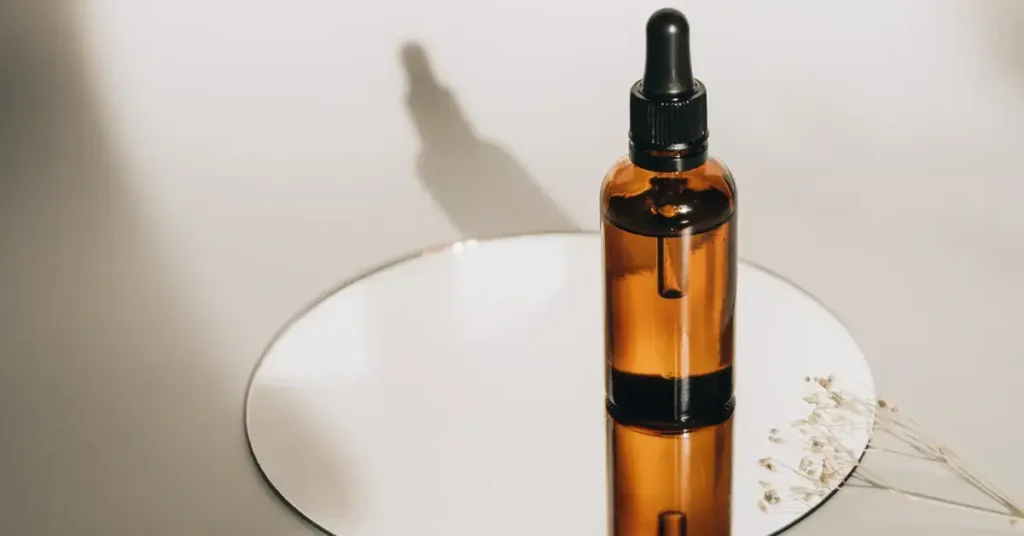
If you’re looking to incorporate gua sha into your skincare routine, choosing the right oil can make all the difference. Here are the three main types of oils to consider when using gua sha: essential oils, carrier oils, and infused oils.
Essential Oils
Essential oils are highly concentrated plant extracts that can be used to enhance the benefits of gua sha. They provide a range of therapeutic benefits, from calming the mind to soothing sore muscles. Some popular essential oils for gua sha include:
- Lavender: Known for its calming properties, lavender oil can help reduce stress and promote relaxation during your gua sha routine.
- Peppermint: With its cooling and invigorating properties, peppermint oil is great for stimulating circulation and reducing inflammation.
- Rosemary: This herbaceous oil can help relieve muscle tension and improve circulation, making it a great choice for gua sha.
Pro tip: When using essential oils with gua sha, be sure to dilute them properly with a carrier oil to avoid skin irritation
Carrier Oils
Carrier oils are used to dilute essential oils and provide a base for gua sha. They are typically cold-pressed from nuts, seeds, or fruits and offer a range of benefits for the skin. Some popular carrier oils for gua sha include:
- Jojoba oil: This lightweight oil is easily absorbed by the skin and provides long-lasting hydration without clogging pores.
- Sweet almond oil: Rich in fatty acids and vitamins, sweet almond oil is great for nourishing and softening the skin.
- Grapeseed oil: With its high concentration of linoleic acid, grapeseed oil is great for balancing oily skin and reducing inflammation.
Remember: Look for organic, cold-pressed carrier oils to ensure the highest quality and purity
Infused Oils
Infused oils are carrier oils that have been infused with herbs or botanicals for added benefits. They can be used alone or as a base for essential oils in gua sha. Some popular infused oils for gua sha include:
- Calendula oil: This gentle oil is great for soothing sensitive skin and reducing inflammation.
- Chamomile oil: With its calming and anti-inflammatory properties, chamomile oil is great for reducing redness and irritation.
- Rosehip oil: Packed with antioxidants and vitamins, rosehip oil is great for brightening the skin and reducing the appearance of fine lines and wrinkles.
Pro tip: To make your own infused oil, simply add dried herbs or botanicals to a carrier oil and let it sit for several weeks to infuse
When choosing an oil for gua sha, it’s important to consider your skin type and any specific concerns you may have. With the right oil, you can enhance the benefits of gua sha and achieve glowing, healthy-looking skin.
How to Choose the Right Oil
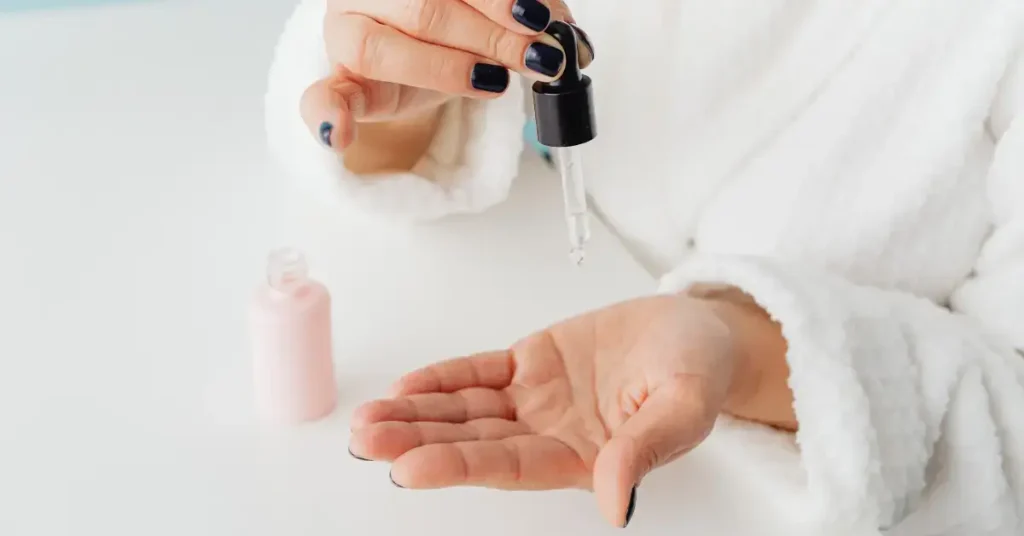
When it comes to gua sha, choosing the right oil is just as important as the technique itself. The right oil can enhance the benefits of gua sha, while the wrong oil can cause irritation or even breakouts. In this section, I’ll guide you through the process of choosing the right oil for your skin type, sensitivity, and desired effects.
Skin Type
The first thing to consider when choosing an oil for gua sha is your skin type. Some oils are better suited for oily or acne-prone skin, while others are more nourishing for dry or mature skin. Here are some general guidelines:
- For oily or acne-prone skin: Look for lightweight oils that won’t clog pores, such as grapeseed oil or jojoba oil.
- For dry or mature skin: Look for heavier oils that provide more hydration, such as rosehip oil or argan oil.
Of course, everyone’s skin is unique, so it’s important to experiment with different oils to find the one that works best for you.
Sensitivity
If you have sensitive skin, it’s especially important to choose an oil that won’t cause irritation or redness. Look for oils that are non-comedogenic and free of fragrances or other potential irritants. Some good options include:
- Squalane oil: This lightweight oil is non-irritating and absorbs quickly, making it a great choice for sensitive skin.
- Hemp seed oil: Rich in fatty acids and antioxidants, hemp seed oil is gentle and nourishing for sensitive skin.
Desired Effects
Finally, consider what you want to achieve with your gua sha practice. Different oils can provide different benefits, such as:
- Anti-aging: Look for oils high in antioxidants, such as rosehip oil or argan oil.
- Acne-fighting: Tea tree oil or neem oil can help fight acne and inflammation.
- Calming: Lavender oil or chamomile oil can help soothe irritated skin.
all i need in life is my gua sha, my cuticle oil, & vaseline
— yas (@destructionsz) August 5, 2023
Pro tip: If you’re not sure where to start, try using a facial oil that’s specifically formulated for gua sha, such as Biossance Squalane + Vitamin C Rose Oil. These oils are designed to provide the perfect balance of slip and grip for a smooth, effective gua sha practice
Benefits of Using Oil with Gua Sha
Gua sha is an ancient Chinese technique that has been gaining popularity in recent years for its numerous benefits to the skin. When combined with the right oil, gua sha can be even more effective in improving the overall health and appearance of your skin.
Using oil with gua sha helps to increase the slip and glide of the tool on your skin, making it easier to perform the massage technique. This can lead to a more comfortable and relaxing experience. Additionally, the oil helps to nourish and hydrate the skin, leaving it feeling soft and smooth.
Personally, I have found that using an oil with gua sha has helped to improve the texture and tone of my skin. I have also noticed a reduction in puffiness and an overall brighter complexion.
Remember: When choosing an oil to use with gua sha, look for one that is lightweight and non-comedogenic. This will ensure that the oil does not clog your pores or cause breakouts. Some great options include rosehip oil, jojoba oil, and squalane oil.
Application Tips for Gua Sha Oils

As someone who has been using gua sha for a while, I can attest that the right oil can make all the difference in your experience. Here are some tips to help you choose and apply the best oil for your gua sha routine.
- Choose the right oil for your skin type: Different oils work better for different skin types. For oily skin, a lightweight oil like jojoba or grapeseed oil may work best. For dry skin, a heavier oil like sweet almond or avocado oil may be more suitable. Be sure to choose an oil that won’t clog your pores.
- Apply the oil generously: You want enough oil to provide slip so that the gua sha tool can glide smoothly over your skin without tugging or pulling. Apply the oil in upward and outward strokes to your face and neck, making sure to cover all areas you plan to use the gua sha tool on.
- Warm up the oil: If you’re using a heavier oil, it can be helpful to warm it up in your hands before applying it to your face. This will help the oil absorb better into your skin and provide a more relaxing experience.
- Don’t be afraid to experiment: Everyone’s skin is different, so don’t be afraid to try different oils to find the one that works best for you. You may find that a combination of oils works better than just one.
- Clean your gua sha tool after each use: To avoid transferring bacteria to your skin, be sure to clean your gua sha tool after each use with soap and water or rubbing alcohol.
By following these tips, you can ensure that your gua sha experience is relaxing, effective, and tailored to your specific skin needs.
Common Mistakes to Avoid
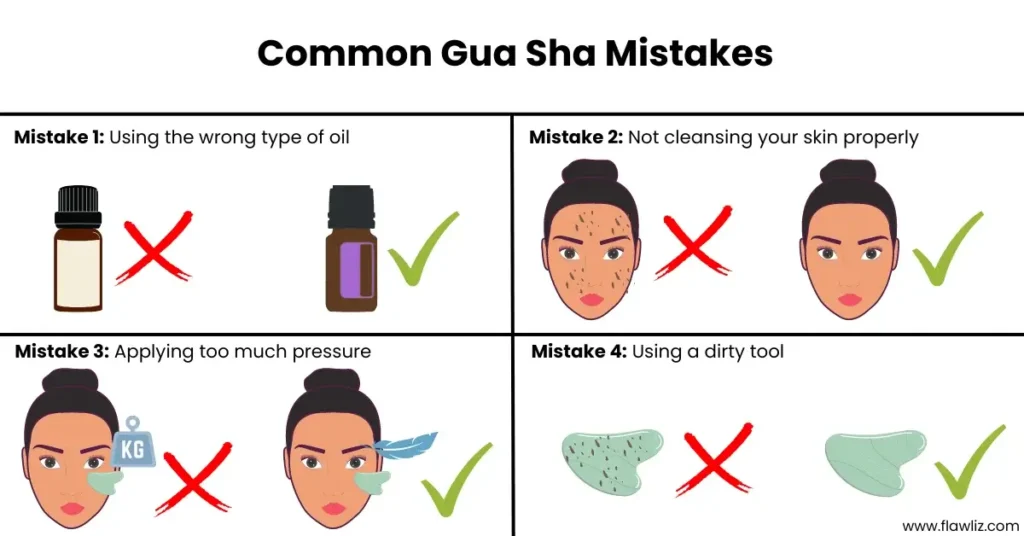
As someone who has been practicing gua sha for a while now, I have learned that using the right oil is crucial to achieving the best results. However, there are some common mistakes that people make when choosing and using their oil with gua sha. In this section, I will share some of these mistakes and how to avoid them.
Mistake 1: Using the Wrong Type of Oil
One of the most common mistakes people make when using gua sha is using the wrong type of oil. It’s important to choose an oil that is appropriate for your skin type and concerns. For example, if you have oily skin, you may want to choose a lighter oil such as jojoba or grapeseed oil. On the other hand, if you have dry skin, you may want to choose a heavier oil such as avocado or rosehip oil.
Mistake 2: Not Cleansing Your Skin Properly
Another mistake people make is not cleansing their skin properly before using gua sha. It’s important to remove any makeup, dirt, or oil from your skin before starting your gua sha routine. This will ensure that the oil you use can penetrate your skin more effectively and you can avoid any breakouts.
Mistake 3: Applying Too Much Pressure
When using gua sha, it’s important to apply just the right amount of pressure. Applying too much pressure can cause bruising and irritation, while applying too little pressure may not be effective. It’s important to find the right balance and use gentle, upward strokes.
Mistake 4: Using a Dirty Tool
Another common mistake is using a dirty gua sha tool. It’s important to clean your tool after each use to avoid any bacteria buildup. You can clean your tool with soap and water or use a disinfectant spray.
For more information on what oil to use with gua sha, check out this guide for expert recommendations.
What Oil to Use with Gua Sha: The Essentials
When it comes to gua sha, using the right oil is essential. The right oil can make a huge difference in the effectiveness of the treatment and can help to nourish and hydrate your skin. In this section, I will share my personal experience and the most important facts about what oil to use with gua sha.
First and foremost, it’s important to choose an oil that is suitable for your skin type. If you have oily skin, you’ll want to choose an oil that is lightweight and non-greasy, such as jojoba oil or grapeseed oil. If you have dry skin, you’ll want to choose an oil that is rich and nourishing, such as rosehip oil or argan oil.
Personally, I have found that using a facial oil that contains a blend of different oils works best for me. I like to use the Algae + Moringa Universal Face Oil from MARA, which contains a blend of algae, moringa, and other nourishing oils. This oil is lightweight, non-greasy, and absorbs quickly into my skin.
Another important factor to consider when choosing an oil for gua sha is the texture of the oil. You’ll want to choose an oil that has a good slip, so that the gua sha tool can glide smoothly over your skin. Oils that are too thick or heavy may make it difficult to perform the gua sha technique properly.
To sum up, when choosing an oil for gua sha, it’s important to consider your skin type, the texture of the oil, and the nourishing properties of the oil. Here’s a quick list of the most important things to keep in mind:
- Choose an oil that is suitable for your skin type
- Look for a facial oil that contains a blend of different oils
- Choose an oil with a good slip for easy gua sha technique
- Consider the nourishing properties of the oil
In my experience, using the right oil can make all the difference in the effectiveness of gua sha. So, take your time to find the right oil for you, and enjoy the benefits of this ancient skincare technique!
FAQ
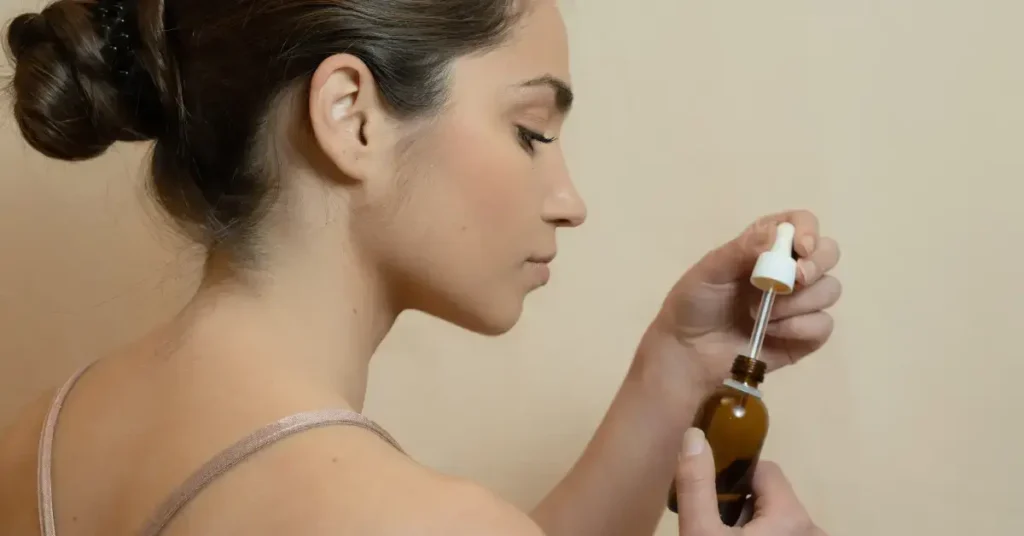
Is it okay to use gua sha without oil?
Using gua sha without oil can cause friction and discomfort, potentially leading to skin irritation or bruising. Oil provides lubrication and reduces friction, ensuring a smoother and safer gua sha experience.
What products should I use with a gua sha?
Use a facial oil or serum to provide proper lubrication and enhance glide during gua sha. Choose products with ingredients like jojoba, rosehip, or argan oil for optimal results. Always prioritize gentle, skin-friendly options to avoid irritation.
Can I use gua sha with moisturizer instead of oil?
Yes, you can use moisturizer instead of oil with gua sha. Moisturizer provides some glide, though oil usually offers better smoothness. Ensure the moisturizer isn’t too thick to avoid discomfort during the practice.
Should I wash the oil off my face after gua sha?
No, you don’t need to wash off the oil after gua sha. Gently patting or massaging the remaining oil into your skin can provide added hydration and benefits.
Can gua sha have negative effects?
Yes, improper gua sha technique or excessive pressure can cause bruising, skin irritation, or broken capillaries. Using the right technique, minimal pressure, and proper lubrication can help avoid these negative effects and ensure a safe and beneficial experience.
Why is my face puffy after gua sha?
Post-gua sha puffiness could be due to increased blood flow and lymphatic drainage, which temporarily causes fluid to accumulate in treated areas. It usually subsides within hours. Ensure proper technique, gentle pressure, and adequate hydration to minimize this effect.
If you liked this blog article about the topic: “What Oil To Use With Gua Sha 2023: Make The Best Decision”, don’t forget to leave us a comment down below to tell us about your experience.

